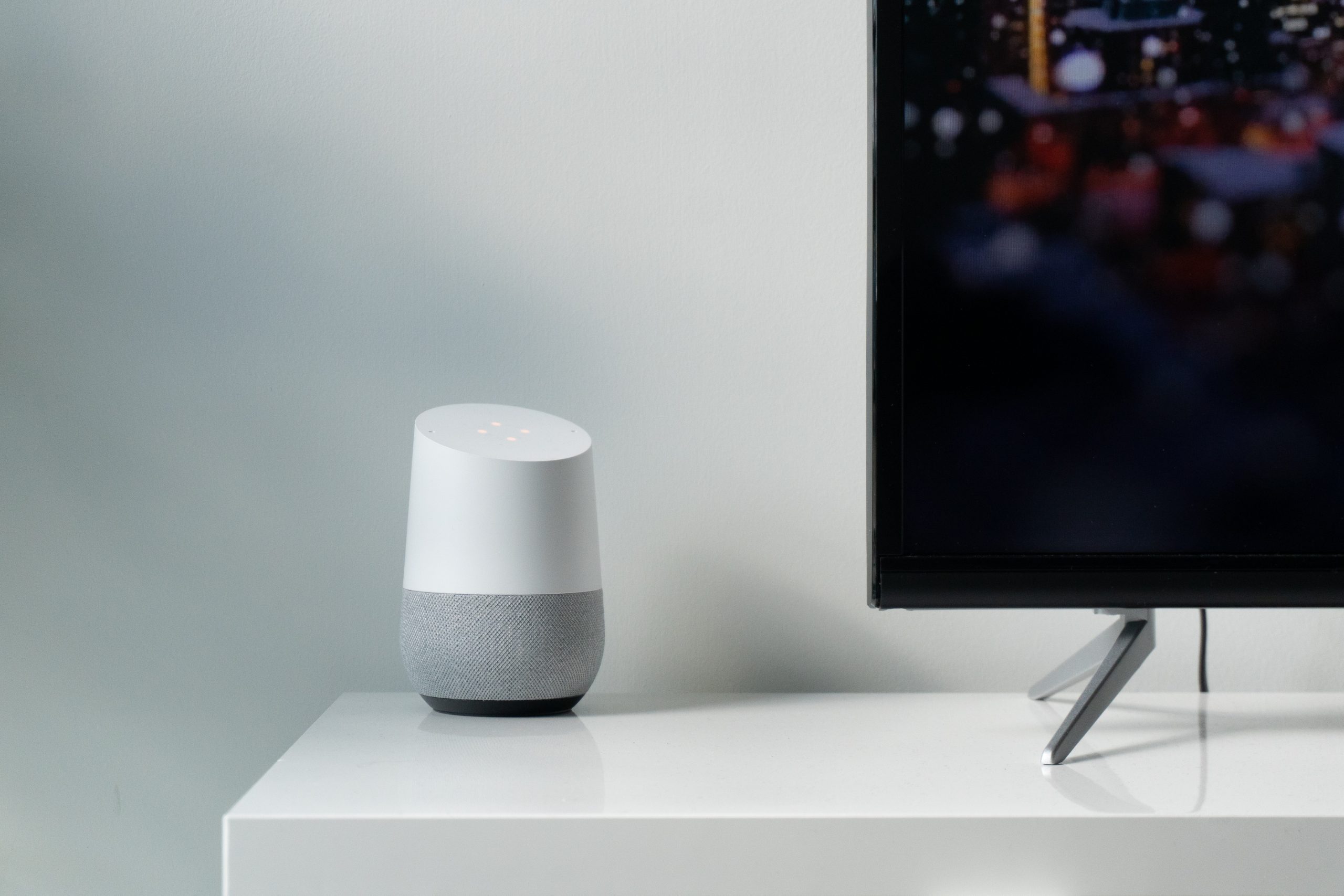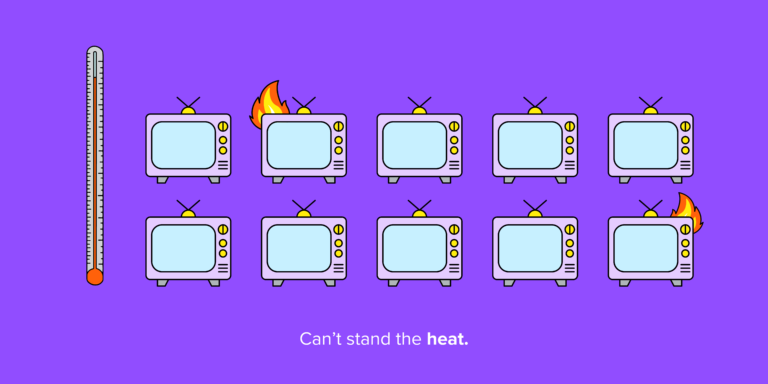This article aims to help you understand the importance of using integrated Web Applications to compete in the constantly evolving market of Video On Demand (VOD) applications on Over The Top (OTT) devices, with a particular focus on Connected TV (CTV). The FX Digital team has collaborated on this article to provide insights from multiple aspects of an agency when it comes to TV technology. In this article we will deal with all the must-have knowledge of OTT TV and then provide an insight into the current state of play within the industry right now.
Now You’re Speaking My Language: How do we define OTT & CTV?
OTT is defined as a streaming media service offered directly to viewers over the internet. OTT devices are essentially any device that delivers media over the internet by connecting to a TV. Throughout this blog, we will be focusing on Smart TV which falls into the category of Connected TV (CTV). CTV is a particular form of OTT TV, which refers to any internet-enabled TV that has access to content beyond traditional broadcasting. CTV also includes set-top boxes such as Amazon Fire and Roku. We will also reference gaming consoles like X Box One and PS4 – these are consoles and fall under the general OTT moniker.
NEA (Never Ending Acronyms): Understanding VOD, AVOD, SVOD and TVOD
There are a lot of acronyms in the world of Connected TV. Don’t get scared off by the jargon, the terms aren’t too difficult to get your head around once you know what they mean. When reading about Connected TV, VOD, AVOD, SVOD and TVOD will come up frequently, so let’s take a look at what they mean:
VOD (Video on Demand)
Allows users to access and view video content anytime, without the constraints of a broadcasting schedule. VOD has been monetised in three major different ways, as explained below.
AVOD (Advertising based Video on Demand)
Video content is free to access and view, however the user must watch adverts during their viewing experience. YouTube is the greatest example of AVOD.
SVOD (Subscription Video on Demand)
Users must pay a subscription fee to access and view content, but typically are then able to consume content uninterrupted by ads. Netflix is the most successful SVOD service.
TVOD (Transactional Video on Demand)
The opposite of SVOD, TVOD content is accessed and viewed on a pay-per-view basis. iTunes use TVOD to sell and rent movies and tv shows.
The Roaring 2020s: A golden era of global online TV episode and movie revenues
It’s predicted that global online TV episode and movie revenues will reach over $158 billion by 2024. This is more than double the $67.8 billion recorded in 2018. According to a report by Digital TV Research, SVOD revenues will climb to $69 billion by 2023 with AVOD revenues reaching $47 billion.

There is a huge amount of expected growth to come from the OTT market. This is backed up by the slew of new streaming services that are planned for launch this year, including Disney+, HBO Max and NBCUniversal. Meanwhile, we are witnessing a change in audience behaviour and the way they consume video content, opting instead for an on-demand approach.
A report by Koeppel Direct determined that in 2018 69% of U.S. consumers subscribed to 1+ OTT service. This was compared to 65% of U.S. consumers who had a traditional cable/satellite subscription. Finally, 43% of U.S. consumers subscribed to both. 2018 was the first year we saw OTT services outperform traditional pay-TV. A more recent study by Parks Associates asserts that the positive trend for OTT services is continuing, to the detriment of traditional cable.
This change in audience behaviour is also mirrored in the UK. A white paper published by UK TV regulatory body Ofcom states that between 2014 and 2018 there has been a rapid adoption of SVOD services, with total UK subscriptions rising from 5.2m to 20m.
Smartening Up: The growing penetration of Smart TV
There is a vast range of streaming devices available on the market, with set-top boxes & sticks currently proving most popular. With that said, Smart TVs are quickly catching up. According to a presentation from ComScore, Smart TV sales have grown 23% since last year, whereas streaming boxes/sticks only grew 9%, and gaming consoles such as Xbox One and PS4 grew 8%. Meanwhile, research from Grabyo asserts that 41% of consumers report watching video most often on larger-screen connected devices (Smart TVs and streaming boxes/sticks).
With competition at an all time high and as consumers become increasingly aware of their choices, customers are increasingly disgruntled when their Smart TV or connected device does not support a brand’s VOD application. It is now key that VOD providers have a presence on the vendor platforms that their audience prefers to use, from Samsung and LG to Amazon Fire TV, or even games consoles.
Android on the Rise: The meteoric growth of Android TV
According to Strategy Analytics there are now a staggering 1.1 billion Connected TV devices in use around the world. Tizen – Samsung’s Operating Sysyem of choice – is the single largest Smart TV OS globally. However, Google’s Android TV OS has Tizen in its targets, now making up 1 in every 10 smart TVs globally.
The continued growth of Android TV is evidenced by the increasing number of operating partners joining the platform. In 2016, there were only eight operators using Android TV. In 2019 that number had risen to 140. Furthermore, Android TV is now being used by 6 out of the top 10 Smart TV manufacturers.
A brief look at the most up to date feature list for the Android TV tells us to expect curated content, actor and actress bios, voice search via remote, and even gaming capabilities However, most impressive of all is the integration that the platform now has with Google Assistant.

In a time when smart speakers and modern mobile phones are integrated with this AI, upgrading a TV to a “Smart”-enabled device will bring a more connected experience for users. Google’s Android strategy of allowing other manufacturers to use their operating system will no doubt ensure the continued growth of Android TV.
Android’s packed feature list and aggressive strategy is proving successful, with Android TV seeing its list of partners increase exponentially. It is anticipated that Android – much like they have in the mobile app space – will become one of the most popular Smart TV operating systems. In turn, this should drive further growth in the market, as audiences flock to Android TV for its array of features and home integration.
Reaching the Masses: TV App approach for mass adoption
To truly get the largest reach with OTT content, media brands require a strategic approach in delivering an app that can run smoothly on all major connected devices. This is increasingly difficult due to device fragmentation, varying operating systems and capabilities of older devices.
Luckily the majority of major connected devices are web-based, meaning Web Apps can run on them. The beauty of this approach is that many connected devices can run a TV Web App, giving media brands the best coverage across multiple devices from a single codebase. This a much more cost effective and efficient approach when compared to developing several native apps for each specific device.
The Seal of Approval: The TV App approval process
Once the development of a TV App is complete, the app must then be submitted for approval from each platform. A further benefit of a web-based approach is that media brands only have to submit their application once as part of the approval process for each platform. Any time a media brand wishes to update their TV App, to add new functionality or make UX enhancements, they can do so by deploying their updates to a live URL that the TV application is associated with. This allows brands to react quickly to growing consumer demands and changes in the business. The opposite is true when submitting a native app – every time a media brand wishes to update their TV app it will need to be submitted to each individual platform and reviewed. Unfortunately, this can be a lengthy process, taking up to several weeks to gain approval.
One Code Base to Rule Them All: The benefits of using a single code base

Using a single code base for a TV application ensures on-going maintenance and updates are cost-effective. Fewer developers are required to work across multiple platforms as the Web App is built using familiar web languages, such as HTML5, CSS, and JavaScript.
A Connected Future: What’s next for Connected Devices?
As Connected TV continues to grow in popularity, multiple broadcasters such as Vodafone and Virgin are enabling Smart features on their set-top boxes. In most instances, these boxes expect a HTML5 application (as opposed to native) from content providers. To gain most coverage across the industry, content providers will have no choice but to build a HTML5 based version of their application.
Platforms that do not currently allow Web Apps (such as Roku and Apple tvOS) will come under increasing pressure to allow for HTML5 development.
Beyond the application itself, we are also expecting to see smaller, more independent content owners seeking out their own Connected TV offering. Similarly to the mobile application market, consumers will have much more choice when it comes to choosing an application to install on their TV devices. Although the behemoths will always get first dibs, there will be an influx of ‘tier 2’ content providers fighting for consumer interest too.
Final Thoughts: Build it and they will come
OTT devices have grown rapidly over the past few years in reaction to dramatic changes in audience viewing behaviours and shifting customer demands. With more media brands launching their own VOD platforms in the coming months, there is great potential for growth in the market.
The current world of connected devices is fragmented, with sticks and set-top boxes clinging onto the market share. However, Smart TV’s are gaining ground and recent trends have witnessed them growing at a quicker pace. This is an industry still in its infancy and it is exciting to see how platforms are evolving to meet this constantly shifting market. Android TV is definitely one to watch as it implements an aggressive growth strategy.
When developing a TV App in this changing landscape of connected devices we recommend a HTML5 Web App approach. This gives media brands the best coverage across connected devices, ensuring customers can access content on the lion’s share of platforms. Web Apps offer opportunities to increase efficiency and reduce maintenance costs, as well as ensuring that your VOD services are approved for use quicker than your competitors.
Platforms that do not currently allow Web Apps (such as Roku and Apple tvOS) will come under increasing pressure to allow for HTML5 development.
Beyond the application itself, we are also expecting to see smaller, more independent content owners seeking out their own Connected TV offering. Similarly to the mobile application market, consumers will have much more choice when it comes to choosing an application to install on their TV devices. Although the behemoths will always get first dibs, there will be an influx of ‘tier 2’ content providers fighting for consumer interest too.





